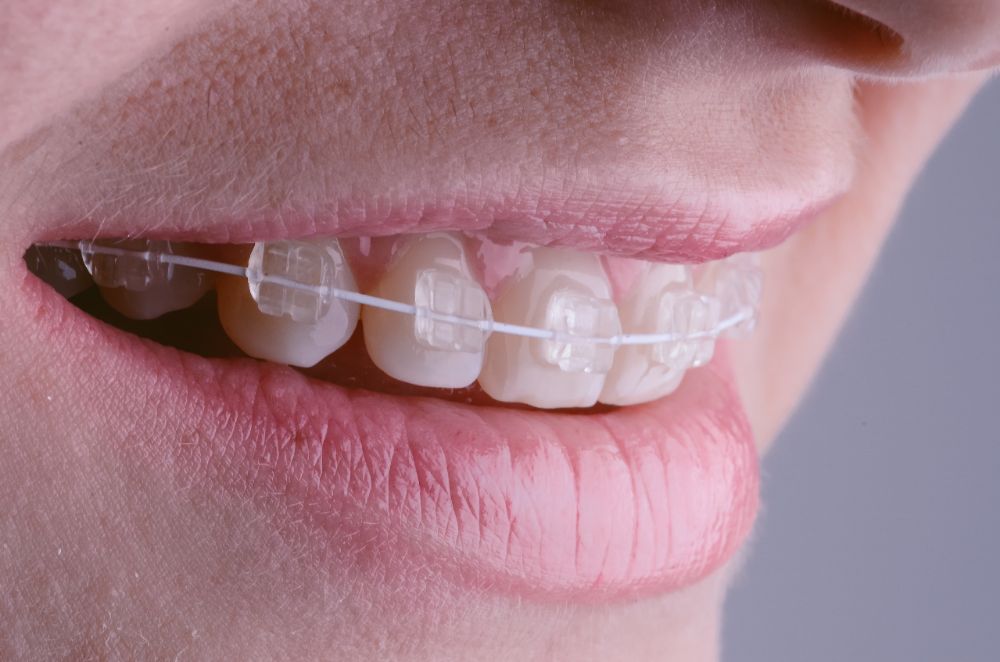- 0183 250 0026
- 9814150026
- info@sightandsmile.com
- Mon-Sun: 7:30 AM - 9:30 PM
What are Dental braces?
Dental braces (also known as braces, orthodontic cases, or cases) are devices nectarleaf.eu used in orthodontics that align and straighten teeth and help position them with regard to a person’s bite, while also aiming to improve dental health. Braces also fix gaps. They are often used to correct under bites, as well as
malocclusions, overbites, open bites, deep bites, cross bites, crooked teeth, and various other flaws of the teeth and jaw. Braces can be either cosmetic or structural. Dental braces are often used in conjunction with other orthodontic appliances to help widen the palate or jaws and to otherwise assist in shaping the teeth and jaws.
Who needs braces?
A dentist usually recommends braces to improve the patient’s physical “orofacial” appearance. Through orthodontic treatment, problems like crooked or crowded teeth, overbites, under bites, incorrect jaw position and disorders of the jaw joints are corrected. Other reasons May include the following:
- Top teeth overlap bottom teeth – We should all have a little bit of an overbite where your upper teeth slightly overlap your lower teeth. But, if you notice that when you bite down, you don’t see much of your lower teeth, you have too much of an overbite. Having a minor overlap is not a problem, but a more severe overlap can cause dental issues and should be corrected to avoid the most common problem, premature tooth wear.
- Top teeth protrude out over the lower teeth – When your upper teeth are jetted out significantly over your lower teeth, this is called an overjet. Having too much overjet can cause trauma to your upper front teeth, most times from falling, because they will be the first to take the impact. This can be corrected with braces in combination with rubber bands and for more severe cases surgery to align the jaws.
- Bottom teeth overlap top teeth – This type of bite is called an underbite and is treated similarly to an overbite, by aligning your jaws or teeth.
- Top and bottom front teeth don’t touch – An open bite can make it difficult to bite or chew foods, and may affect your speech. While sometimes genetic gorilla pie strain, open bites can also be caused by prolonged thumb-sucking or pacifier use.
- Teeth don’t meet on each side – If your top and bottom teeth on the sides of your mouth don’t line up when you close your mouth, you may have a crossbite, which can cause your teeth to wear unevenly. Crossbites are fixed by aligning your teeth or jaws, depending on what is causing the issue.
- Teeth are crooked – This is the most common reason people go to see an orthodontist and is most likely what you think of when you hear someone is getting braces. Your teeth can be crooked for a variety of reasons, such as your adult teeth may have come in around baby teeth that didn’t fall out right away, or you may not have enough space in your jaw to accommodate all of your adult teeth. Whatever the reason, crooked or crowded teeth can be hard to clean and may make you self-conscious, but they are easily moved back into place with braces or Invisalign.
- Too much space between teeth – This is the opposite problem of having crowded teeth, but it can also cause issues and is very treatable with braces or Invisalign.
- Jaw or mouth pain – Not all orthodontic issues are visible, some may only be felt, but that doesn’t make them any smaller. If you experience jaw or mouth pain on a regular basis, you should see an orthodontist right away to determine what is causing your discomfort.
- Difficulty biting or chewing – Teeth that are misaligned can negatively affect your ability to eat comfortably. If you have trouble eating or find yourself frequently biting the insides of your cheeks or your tongue, it may be because your teeth are crooked or your bite is off.
- Speech issues – Not being able to speak clearly can be caused by many things, one of which is an orthodontic issue. If you have trouble saying certain words, or if you notice your child is struggling, it may be time to schedule an appointment with an orthodontist.
Types of Braces
Metal braces/Traditional braces
These are the metal brackets and wires that most people picture when they hear the word “braces.” However, modern brackets are smaller and less noticeable than the notorious “metal-mouth” braces that many adults remember. Plus, new heat-activated archwires use your body heat to help teeth move more quickly and less painfully than in the past.
- Pros – Least expensive type; colored bands give kids a chance to express themselves
- Cons – Most noticeable type of braces

Ceramic Braces
Ceramic braces are the same size and shape as metal braces, except that they have tooth-colored or clear brackets that blend in to teeth. Some even use tooth-colored wires to be even less noticeable.
- Pros – Less noticeable than metal braces; move teeth much faster than clear plastic aligners (Invisalign)
- Cons – More expensive than metal braces; Brackets can stain easily if patients don’t care for them well

